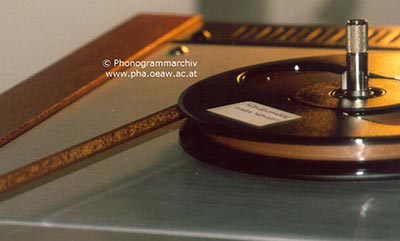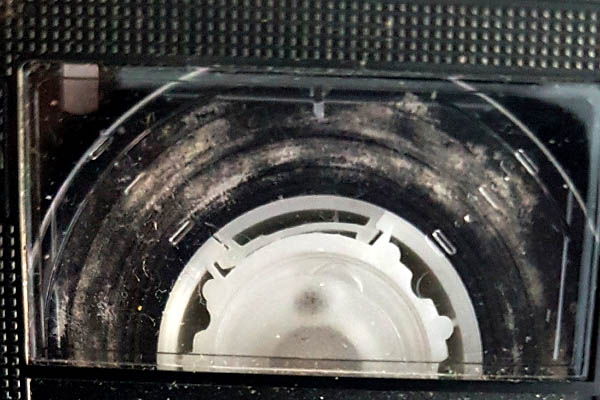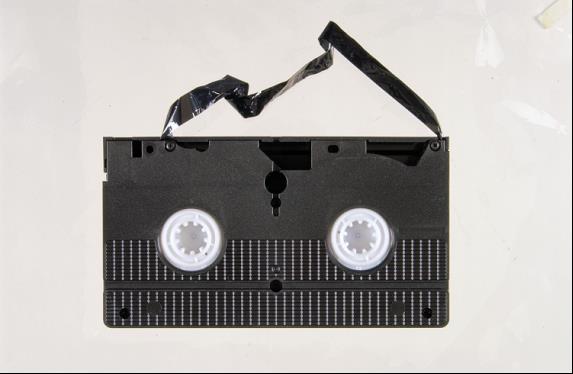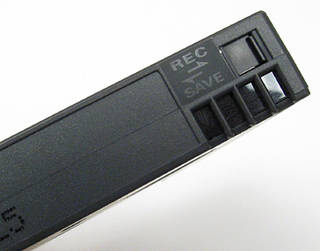| Table of Contents |
|---|
Introduction
...
Types of damage and deterioration
...
Binder deteriorationdeterioration
| Info | ||
|---|---|---|
| ||
"1.1.3. Inspect for damage / Look for chemical deterioration / Binder degradation". In Audio Tape Digitisation Workflow. Accessed February 22, 2021. |
...
Flaking/missing magnetic oxide particles are an indication of tape deterioration. This type of drop-out cannot be corrected physically.
Mould
...
| Info | ||
|---|---|---|
| ||
Are Your Video Tapes Showing Bad Signs of Mould. MultiMedia Select. Accessed February 24, 2021. |
Description
Active mould is generally moist while dormant mould is dry and dusty. Mould growths may be white, black, brown or mustard-coloured and usually have a pattered, fuzzy, or thread-like appearance. Mould can cause permanent damage to tapes over time if not removed. Fungus and mould is also a significant health hazard and affected materials should be handled using gloves and masks.
...
Mouldy tapes should be isolated from unaffected materials to prevent cross contamination. Store tapes at a temperature of 24°C in an environment with effective air circulation and less than 50% Relative Humidity. Loose mold can be vacuumed from the tape pack and then the tape should be treated with an appropriate fungicide.
...
fungicide.
Stretching and breaking
| Info | ||
|---|---|---|
| ||
Figure 20. Wrinkled VHS tape. Caring for audio, video and data recording media. Government of Canada, Canadian Conservation Institute. June 30, 2020. |
Cause
Stretching and breaking of video tape usually results from improper handling or use of playback equipment.
...
Stretching can distort the tape signal however data can usually be recovered (with a decrease in signal quality).
Accidental recording
| Info | ||
|---|---|---|
| ||
Record Protection Mechanisms: MiniDV. Preservation Self Assessment Program. Accessed February 24, 2021. |
Description
Camera operators can accidentally record over pre-existing footage
...
- Section 9.0 - Outsourced digitization of audiovisual items
- Appendix C - Technical specifications for moving images
University Archives Procedure Manual
...
Visit the /wiki/spaces/ALC/overview for further reading on /wiki/spaces/ALC/pages/1891631115.
References
...
AMIA. "Video Preservation Factsheets." Accessed December 10, 2020.
Bensinger, Charles. "Chapter 6: All about videotape." In The Video Guide, Second Edition, 71-75. Santa Barbara, California: Video-Info Publications, 1981.
Bogart, John Van. "What Can Go Wrong With Magnetic Media?" In Magnetic Tape Storage and Handling: A Guide for Libraries and Archives. Washington, DC: The Commission on Preservation and Access, 1995.
Casey, Mike. "FACET: Format characteristics and preservation problems." Bloomington, IN: Indiana University, 2007.
Gibson, Gerald. D. "Magnetic tape deterioration: recognition, recovery and prevention." Paper presented at the IASA Conference, Perugia, August 26, 1996.
Jimenez, Mona and Liss Platt. "Videotape Identification and Assessment Guide." Texas Commission on the Arts. 2004.
MediaCollege.com. "The DVCAM Format." Accessed February 3, 2021.
Museum of Obsolete Media. "DVCAM (1996 – )." Accessed February 3, 2021.
PCMag. "DVCAM." Accessed February 3, 2021.
Preservation Self Assessment Program. "Videotape: DVCAM." University of Illinois at Urbana-Champaign. Accessed February 3, 2021.
WDVA. "Do DV Formats Mystify You?" 2004.
Wheeler, Jim. "Videotape preservation handbook." 2002.
Wilt, Adam J. "The DV, DVCAM & DVCPRO Formats: The DV formats tabulated." August 28, 2005.
Wilt, Adam J. "The DV, DVCAM & DVCPRO Formats." July 16, 2006.
Version history
...
| Version | Date | Author(s) | Version Notes |
|---|---|---|---|
...



